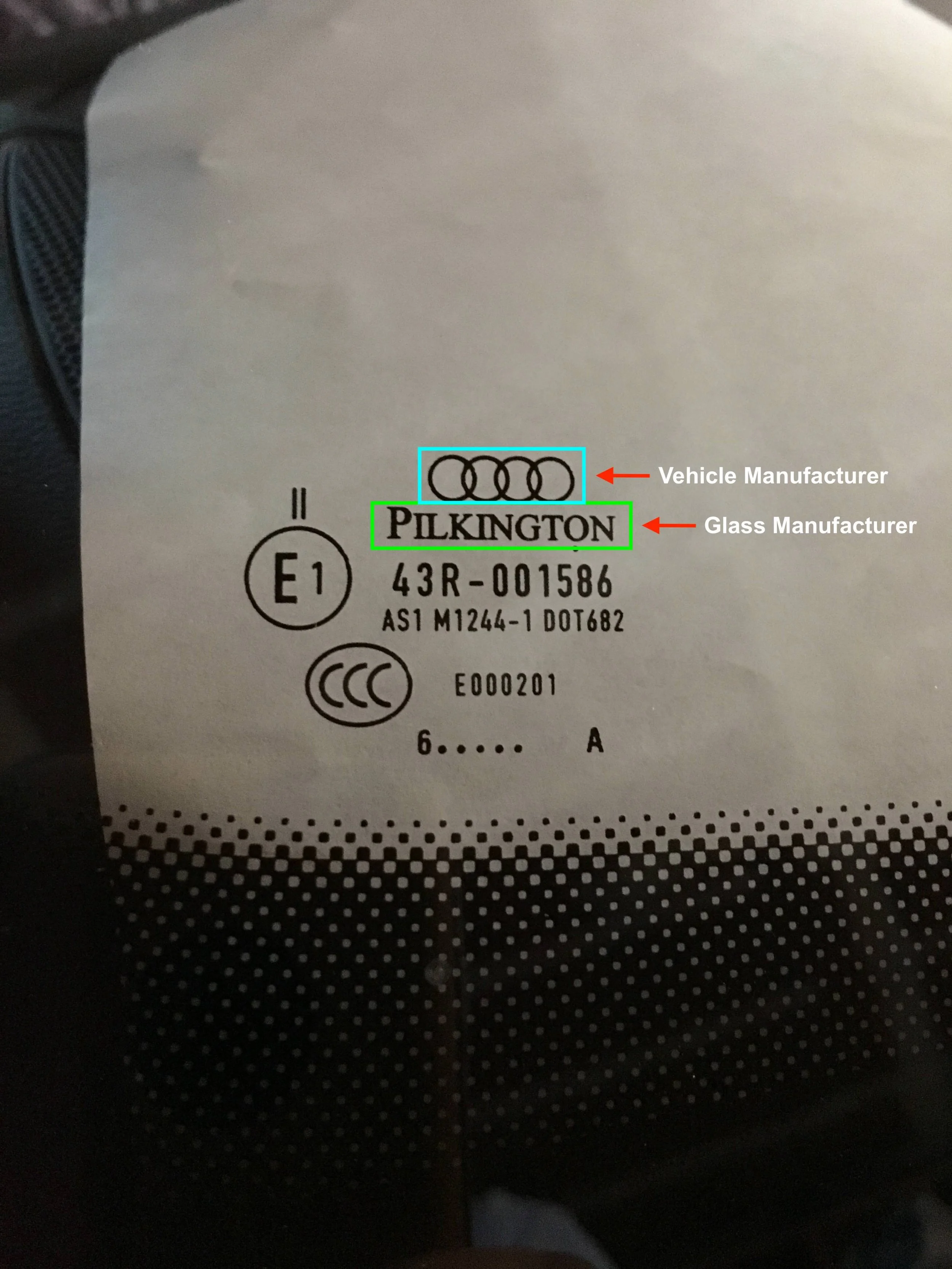Frequently Asked Questions | Differences between OEM vs. Aftermarket
OEM vs. Aftermarket Glass:
Each automobile manufacturer has distinct and specific ways they make windshields for their cars and trucks, but how a windshield is made tends to be the same across the board. The end result of properly constructed windshield, is that the glass stays in one piece.
A layer of polyvinyl butryal (PVB) is sandwiched between two sheets of glass
Pressure and heat are applied, which chemically and mechanically bonds the outer sheets of glass to the inner plastic layer
The unfinished windshield is bent and cut to fit to the specific frame on the automobile
The windshield is molecularly bonded with sealant to the frame of the car, which is completely water and air tight.
The primary brands of windshields, door glasses, vent glasses, quarter glasses, and back glasses we sell and install the majority of the time are manufactured by Fuyao, XYG, Vitro/PGW, Pilkington, Carlex/Carlite, Mopar, and Sekurit; the same companies who hold the contract or bid to manufacturer the proprietary glass for the automobile manufacturer’s assembly lines.
“Wheels and Glass’s installers regularly report the quality of replacement glass based upon in-person inspections and through closer examination during the installation process.
We review their feedback so Wheels and Glass can provide insights to our customers ensuring that all services reflect the highest standard of quality.
Wheels and Glass does not partner with any brands and surveys the quality of materials used for the purposes of our customer’s best interest. ”
Brand Quality Rank:
Sekurit Saint-Gobain (OEM - International Vehicles)
Pilkington (OEM + Aftermarket - International and Domestic Vehicles)
Guardian (OEM - Domestic Vehicles)
Fuyao (OEM + Aftermarket - International and Domestic Vehicles)
AGC (OEM + Aftermarket - International and Domestic Vehicles)
Mopar (OEM + Aftermarket - Domestic Vehicles)
Carlex (OEM + Aftermarket - International and Domestic Vehicles)
Carlite (OEM - Domestic Vehicles)
AP Tech (OEM + Aftermarket - Domestic Vehicles)
PGW (OEM + Aftermarket - International and Domestic Vehicles)
ATI (Aftermarket - International and Domestic Vehicles)
Vitro (Aftermarket - International and Domestic Vehicles)
TriVal (Aftermarket - International and Domestic Vehicles)
XYG (Aftermarket - International and Domestic Vehicles)
Published Date - (2023)
OEM vs. Aftermarket Windshield Glass: What You Need to Know
There are differences. Not on the safety end. The glass must meet certain rigors before it can even be sold in the United States. The best way the customer can make sure that’s the case is to look on the monogram of the glass for the DOT number.
However, there are differences, especially now with the ADAS systems - the Advanced Driver Assist Systems - where the glass clarity is absolutely imperative to make sure everything works properly.
OE stands for Original Equipment. That’s the glass that came in the car when it was assembled at the plant.
OEM is glass that was made by the same manufacturer. That’s what OEM means - Original Equipment Manufacturer.
OEE means it’s original equipment equivalent. A brand that also makes glass for different vehicle manufacturers.
So what’s offered by most reputable glass companies is a variety of different types. Is it an OE glass, OEM glass, OEE glass, or is it an ARG (Aftermarket Replacement Glass) glass? And that’s the price points as well. At Wheels and Glass, we welcome any customer request for OEM/OEE versus ARG glass. We have accounts with every major automotive dealer and glass distributor to ensure that there is always an available option if the customer prefers one.
So, there are differences. The differences can make the difference between whether a vehicle can be recalibrated or not. It may be that it will look the same and fit the same, and there will be less likelihood of air leaks or water leaks. It might be the difference between a perfectly optically clear glass or one that has a slight distortion on the passengers side, or something similar.
What exactly is “Aftermarket” Replacement Glass?:
Aftermarket auto parts are made by a company other than the original equipment manufacturer, or by the same OEM company on a different production line. Some of these parts are similar quality to OEM parts. Others are not.
Automotive replacement glass manufacturers are sometimes the same manufacturers who construct the very glass your vehicle came with from the factory. With each new production year and model variation, automobile manufacturers offer seasonal contracts to glass companies and as time moves forward, inventory subsides and new glass needs to be produced for older vehicles. When the original equipment manufacturer no longer produces the proprietary glass, alternative glass brands will reproduce original equipment equivalent glass for these past-models in place of the original producer.





















